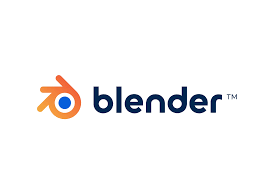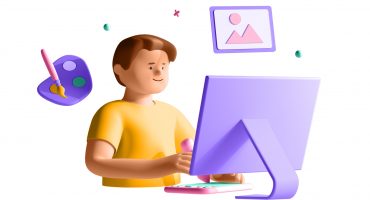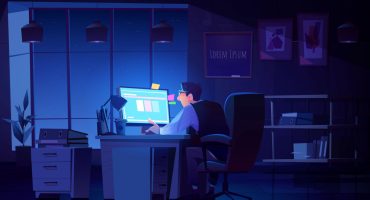
Introduction to Blender 3D Animation Software
Blender is a powerful open-source 3D animation software widely used by artists, designers, and animators for creating stunning visual effects, animated movies, video games, and more. It offers a comprehensive set of tools and features that make it a popular choice among professionals and enthusiasts alike.
History and Development of Blender
Blender was first developed in 1995 by Ton Roosendaal and has since evolved into a robust software package. It has a vibrant and active community of developers who continuously contribute to its improvement. Blender’s open-source nature allows users to access its source code and modify it according to their needs, making it highly customizable and flexible.
Key Features and Tools of Blender
Blender offers a wide range of features and tools that empower artists to bring their imagination to life. It includes modeling tools for creating complex 3D models, sculpting tools for detailed organic shapes, and texturing tools for adding realistic textures to objects. Additionally, it provides a powerful node-based material editor, advanced physics simulations, a built-in compositor for post-processing effects, and a non-linear video editor.
Creating 3D Models with Blender
Blender provides an intuitive interface and a variety of modeling techniques to create 3D models. It supports polygonal modeling, subdivision surfaces, and sculpting, allowing artists to create intricate and realistic models. Furthermore, Blender’s robust UV mapping tools enable efficient unwrapping of 3D models for applying textures.
Texturing and Lighting in Blender
Blender offers a wide range of texturing tools that allow artists to create realistic materials and textures for their models. It supports procedural textures, image-based textures, and node-based material editing, providing artists with unlimited creative possibilities. In addition, Blender’s advanced lighting system helps to create realistic lighting setups, including global illumination and physically-based rendering.
Animation and Rigging in Blender
Blender’s animation tools enable artists to bring their models to life by creating complex animations. It supports keyframe animation, skeletal animation, and shape key animation. Artists can also rig their models with armatures, allowing for realistic movement and deformation. Blender’s pose library makes it easy to reuse animations and poses, saving time and effort in the animation workflow.
Simulations and Effects in Blender
Blender provides a wide range of simulation tools, including fluid simulation, cloth simulation, particle systems, and more. These tools allow artists to create realistic simulations of natural phenomena and physical effects. Whether it’s a flowing river, a billowing flag, or a swirling tornado, Blender’s simulation capabilities offer endless possibilities.
Rendering and Post-Processing in Blender
Blender includes a powerful rendering engine called Cycles, which supports physically-based rendering and ray tracing. It produces high-quality, photorealistic images and animations. Additionally, Blender’s built-in compositor allows artists to enhance their renders with post-processing effects such as color correction, depth of field, and motion blur.
Blender’s Role in the Animation Industry
Blender has gained recognition in the animation industry for its capabilities and its accessibility as an open-source software. It has been used in the creation of animated movies, visual effects for films and commercials, and video game development. Its versatility and powerful toolset have made it a popular choice for many professional animators and studios.
Benefits of Using Blender for 3D Animation
Using Blender for 3D animation offers several advantages. First and foremost, it is free and open-source, which makes it accessible to anyone interested in learning animation. Additionally, Blender’s active community provides support, tutorials, and a vast array of resources to help users get started and improve their skills. Its powerful feature set and customizable interface ensure that artists have the tools they need to create stunning animations.
Blender Community and Resources
Blender has a thriving community of artists, animators, and developers who contribute to its growth. Online forums, social media groups, and dedicated websites provide a platform for users to connect, share their work, and seek guidance. Additionally, numerous tutorials and courses are available, both free and paid, to help users learn Blender at their own pace.
Learning Blender: Tutorials and Courses
Learning Blender can seem daunting at first, but with the abundance of tutorials and courses available, mastering the software becomes an achievable goal. Online platforms offer comprehensive video tutorials, step-by-step guides, and interactive courses taught by experienced instructors. Whether you’re a beginner or an advanced user, there are learning resources tailored to your needs.
Frequently Asked Questions (FAQs):
1. Is Blender suitable for beginners in 3D animation?
Yes, Blender is suitable for beginners as it offers a user-friendly interface and extensive learning resources. With dedication and practice, anyone can learn to create impressive 3D animations using Blender.
2. Can Blender be used for professional animation projects?
Absolutely! Blender has been used in professional animation projects, including movies and video games. Its powerful feature set and flexibility make it a valuable tool for professional animators.
3. Does Blender work on different operating systems?
Yes, Blender is compatible with All Types of operating systems. It provides the same features and functionality across different platforms.
4. Are there any limitations to using Blender?
While Blender is a powerful software, it does have certain limitations. Some users may find the learning curve steep, especially if they are new to 3D animation. Additionally, Blender’s rendering times can be longer compared to other commercial software.
5. Can I contribute to the development of Blender?
Yes, Blender is an open-source software, and anyone can contribute to its development. Whether it’s reporting bugs, suggesting improvements, or submitting code, the Blender community welcomes contributions.
Conclusion
Blender 3D animation software is a versatile and powerful tool for creating stunning visual effects and animations. Its extensive feature set, active community, and open-source nature make it an attractive choice for beginners and professionals alike. With Blender, artists can unleash their creativity and bring their imaginations to life.
if you Need Any Help About blender join Our community and visit
Click Here Blender Forum

















1 Comment